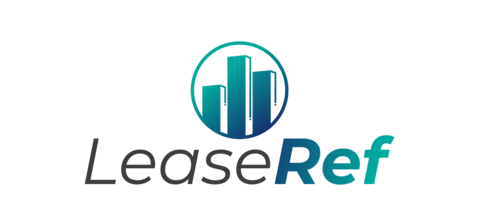If you’re here, chances are you’re involved in a commercial lease negotiation – either as a landlord or a tenant. This can be a complex process, with a lot of factors to consider, and it’s vital to make sure everything is covered to protect your interests. That’s why I’ve created this guide on the commercial lease negotiation checklist, an essential tool to make your negotiation process smoother and more efficient.
This post will take a closer look at what commercial lease negotiation is, the role of a checklist in this process, and the essential items that should be on this checklist.
Understanding Commercial Lease Negotiation
Commercial lease negotiation refers to the process where prospective tenants and landlords discuss the terms and conditions of a commercial lease. The goal is to reach an agreement that both parties find fair and beneficial. This can cover a wide range of aspects – everything from the duration of the lease and the rent payable to what happens if the lease is breached.
Why is this negotiation process so crucial? Well, the terms of a lease can have significant implications for both parties involved. For a tenant, a poorly negotiated lease could result in excessive costs, limited flexibility, or even issues with using the property as desired. On the other hand, landlords also want to ensure their property is protected, their returns are satisfactory, and their risks are mitigated.
Let’s look at a real-life example: suppose you are a tenant negotiating a lease for a retail store. You fail to negotiate the frequency and rate of rent increases, taking the initial, affordable rent at face value. A few years into the lease, the landlord imposes steep annual rent hikes, making the premises unaffordable for your business. A comprehensive lease negotiation process could have anticipated and prevented this issue.
The Role of a Commercial Lease Negotiation Checklist
The checklist itself serves as a comprehensive guide to ensure all the key aspects of a commercial lease are considered and discussed during negotiations. It’s like your road map through the negotiation process.
This checklist is beneficial for both tenants and landlords. For tenants, it ensures that you consider all critical elements that could affect your business operations and costs in the long term. For landlords, it guarantees that you safeguard your investment by addressing all necessary points that protect your property and maintain its value.
Consider it like packing for a long trip. Without a checklist, you might forget to pack your essentials, only realizing you missed something crucial once you’re already on your way. Similarly, a lease negotiation checklist ensures you’re well-prepared and haven’t overlooked any key areas during your “journey” through lease negotiation.
The Anatomy of a Commercial Lease Negotiation Checklist
This checklist will typically include a list of key items, each of which requires careful consideration during the negotiation process. Here’s a breakdown of the checklist:
3.1 Basic Information
This section includes the foundational details of the lease:
- Landlord and Tenant Information: The identities of the parties involved in the lease.
- Property Address: The specific location of the commercial premises to be leased.
- Proposed Use of the Premises: How the tenant intends to use the property. This is crucial as certain premises may have limitations or zoning restrictions on their use.
3.2 Lease Term and Renewal
The lease term and renewal stipulations are significant aspects of the lease agreement:
- Start and End Dates: The official duration of the lease.
- Renewal Terms: The conditions under which the lease can be extended after the initial term ends. It may also include details of how and when the tenant should notify the landlord about lease renewal.
3.3 Rent and Other Charges
This section outlines the financial responsibilities of the tenant:
- Base Rent: The initial amount that the tenant agrees to pay monthly or annually.
- Rent Escalation: The mechanism by which the rent may increase over time.
- Common Area Maintenance (CAM) charges, Insurance, and Taxes: These can often be passed on to the tenant in commercial leases. Understand how these play into the commercial lease calculation, and what can cause these charges to increase.
- Security Deposit: The deposit required upfront, usually as a security measure against potential damages or default.
3.4 Premises Modification and Maintenance
Considerations about the upkeep and modification of the leased space:
- Tenant’s Right to Alter the Premises: This defines whether and how the tenant can modify the leased space.
- Responsibility for Repairs and Maintenance: Who is responsible for maintaining the property – the landlord or the tenant?
- Consent for Modifications: Do any modifications or improvements need the landlord’s consent?
3.5 Lease Termination and Default
Defines the consequences and remedies for breach of lease:
- Termination Conditions: The specific conditions under which the lease may be terminated before its end date.
- Default: What constitutes a breach of the lease and what happens if either party defaults?
3.6 Assignment and Subletting
Rules around lease transfer:
- Assignment Rights: Can the tenant transfer the lease to another party? Under what conditions?
- Subletting: Is the tenant allowed to sublease part or all of the premises? What are the terms for this?
3.7 Insurance and Liability
This part addresses the risk management aspects of the lease:
- Insurance Obligations: Who is responsible for insuring the premises, and what types of coverage are required?
- Liability: What happens in the event of property damage or personal injury on the premises? How is liability divided between the landlord and tenant?
3.8 Services and Amenities
This section details the services provided as part of the lease:
- Landlord-Provided Services: What services does the landlord provide as part of the lease (e.g., utilities, janitorial services, security)?
- Shared Amenities: Are there shared spaces or amenities, such as parking, a shared lobby, or restrooms? What are the terms of use?
3.9 Compliance with Laws
Discusses the responsibility for legal compliance:
- Compliance with Laws: Who is responsible for ensuring that the premises remain in compliance with local, state, and federal laws?
3.10 Dispute Resolution
This part covers how disagreements will be handled:
- Dispute Resolution: How will disputes related to the lease be resolved? Are there provisions for mediation or arbitration?
- Governing Law: Which state’s laws will apply in case of a dispute?
Tips for Successful Commercial Lease Negotiation
Now that we’ve gone over the commercial lease negotiation checklist, let’s look at some tips to make your negotiation process itself even more successful:
1. Understand your Business Needs: Before starting negotiations, have a clear understanding of what you need from the lease. This could be anything from the amount of space to specific modifications required.
2. Don’t Rush: Take your time to understand the terms of the lease and ensure that they work for you. It’s not just about getting the best price; it’s also about making sure the lease will serve your needs over the long-term.
3. Seek Legal Advice: Commercial lease agreements can be complex. It’s a good idea to have a lawyer review the lease and help with negotiations to ensure you’re adequately protected.
4. Be Ready to Walk Away: If the terms aren’t right and the landlord isn’t willing to negotiate, be prepared to walk away. It’s crucial to find a lease that works for you.
5. Use the Checklist: The commercial lease negotiation checklist is an invaluable tool in the negotiation process. Make sure you discuss and agree on all points in the checklist during negotiations.
Conclusion
Negotiating a commercial lease can be a complex process, but it’s a very worthwhile process. A well-negotiated lease can significantly impact the success of your business or the return on your property investment. Therefore, taking the time to negotiate properly is not just recommended—it’s essential.



